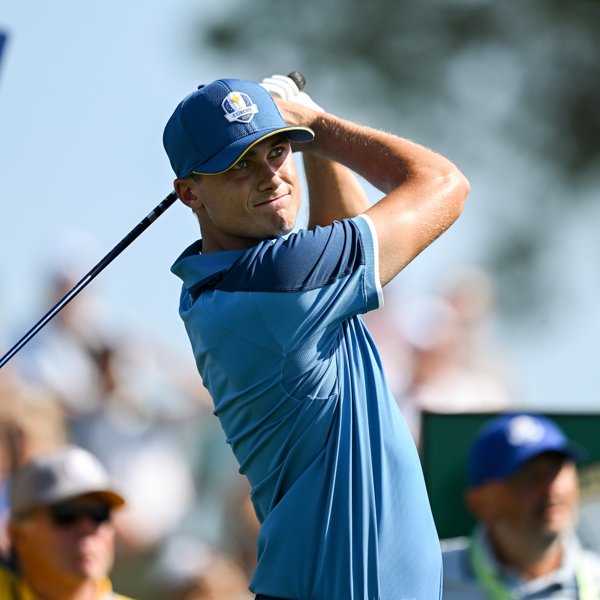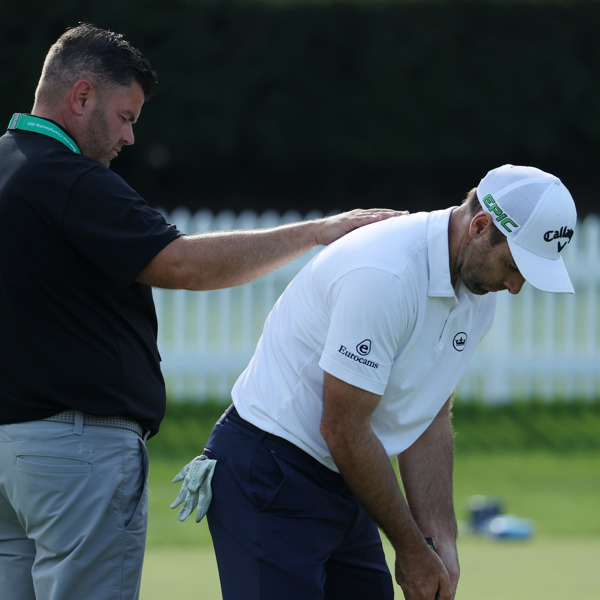PGA Advanced Professional and England Men’s Coach Robb Watts analyses the power and precision built within Austrian Sepp Straka’s swing.
Sepp Straka is the embodiment of the modern player. He has a strong, athletic build and a powerful yet stable golf swing. At 6 foot 3 and 235 pounds he could easily be mistaken for a Rugby quarterback, yet he uses the mass of his body very well. If you watch how he takes the club away to the top of the backswing you’ll see he stays beautifully in forward bend. His lead arm sits perfectly over the top of his right shoulder and his right elbow plane sits nicely in front of him. You can also see the energy through the right foot is exceptionally balanced, hence why he can hold his forward bend so effectively. This immaculate stability over the ball contributes to that very neutral ball flight we see him produce with driver. He doesn’t have a lot of curvature to his shots.
From what I understand, he practises using a metronome app on his phone in warm-up and practice to improve his tempo to help him with swing synchronicity. It’s really simple, nail the tempo and you know you’ve nailed the turn. Utilising this, alongside the sound mechanics of his movement, will undoubtedly lead to a consistent ball strike and ball flight. Two crucial factors to finding the fairways and peppering the pins in the Ryder Cup at Marco Simone GC in Rome this weekend.
From working with golfers at the highest level of the game I know the importance of staying really deep over the ball. Straka’s scoring consistency this season is proof of that. His final-round 62 in the John Deere Classic in early July was a serious come-back victory. The 30-year-old works his upper body nicely into his lower half. If you don’t hold your forward bend then your low point control is going to be seriously challenged, which means you’d have to chase the low point back with too much hands and arms swing, to catch up the low point. By staying in his forward bend and using the body pivot to control the low point Straka is able to stabilise the face. His low point is longer through impact, which is a common trait shared by all the best players in the world.
Keep a track of the numbers of fairways and greens this Ryder Cup rookie hits over the weekend with his strong, neutral ball flight. I’m sure it will be staggering.
I don’t personally know Straka’s coach John Tillery, from his US college days so I can’t comment on what they would be working on this week, but from watching him in action, I would say that from a movement mechanics perspective he really does demonstrate excellent stability. He stays on top of the ball, her stays in his tilts very well in his golf swing. That tied in with his much publicised tempo work (he practises using a metronome app on his phone) and that all contributes to a consistent ball strike and ball flight.









